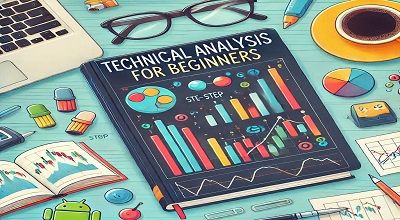Technical Analysis
Technical analysis is a methodology used to evaluate securities and forecast their future movement by analyzing statistics generated by market activity, such as past prices and volume. Traders and investors widely use it to make better-informed decisions. Here’s a beginner’s guide to understanding and applying technical analysis, incorporating the latest approaches and tools as of my latest update:
What is Technical Analysis?
Technical analysis involves studying historical price and volume data to predict future market movements. It operates on the premise that history tends to repeat itself and that prices move in trends.
The Fundamental Principles
- Price Discounts Everything: All known information is reflected in the market price.
- Price Moves in Trends: Prices typically move in short, medium, or long-term trends.
- History Tends to Repeat Itself: Market psychology is predictable through patterns and trends.
Getting Started with Charts
Types of Charts
- Line Charts: Display the closing price over a set period.
- Bar Charts: Show the opening, high, low, and closing prices (OHLC) for each period.
- Candlestick Charts: Similar to bar charts they provide visual cues that make reading price action easier.
Understanding Chart Patterns
- Continuation Patterns: Indicate that a trend is likely to continue (e.g., triangles, flags, and pennants).
- Reversal Patterns: Suggest a trend that might reverse (e.g., head and shoulders, double tops, and bottoms).
Technical Indicators
Trend Indicators
- Moving Averages: Helps smooth out price action to identify the trend direction.
- MACD (Moving Average Convergence Divergence): Used to find changes in the strength, direction, momentum, and duration of a trend.
Momentum Indicators
- RSI (Relative Strength Index): Measures the speed and change of price movements.
- Stochastic Oscillator: Indicates momentum by comparing the closing price to the price range over a specific period.
Volume Indicators
- Volume: The number of shares or contracts traded in a security or market during a given period.
- On-Balance Volume (OBV): Uses volume flow to predict changes in stock price.
Applying Technical Analysis
- Develop a Trading Plan: Define your investment objectives, risk tolerance, entry and exit strategies, and how you’ll use technical analysis to make decisions.
- Practice with a Demo Account: Before investing real money, practice your strategies on a demo account to gain experience without risk.
- Continuous Learning: The field of technical analysis is vast. Keep learning new patterns, indicators, and strategies.
Latest Approaches and Tools
- Machine Learning and AI: These technologies are being increasingly used to predict market movements by analyzing vast datasets more efficiently than traditional methods.
- Trading Software and Platforms: Modern trading platforms offer advanced charting tools, technical indicators, and automated trading options.
- Social Trading and Sentiment Analysis: Analyzing market sentiment through social media and news trends can provide insights into market direction.
Staying Updated
The field of technical analysis evolves continuously, with new theories, tools, and technologies emerging. It’s important to stay updated by following financial news, participating in online forums, and consulting with more experienced analysts.
Final Words
This guide serves as a starting point. For more detailed and updated information, consider following financial education platforms, taking online courses, and reading books by renowned experts in the field.
